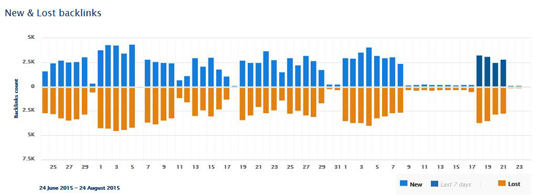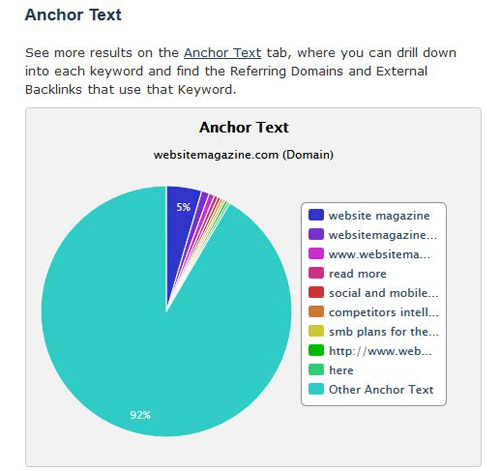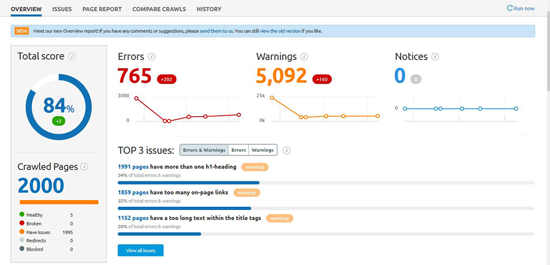Negative SEO - Fact or Fear Tactic?

Over the past few years many have come to realize the potential for negative SEO tactics to harm their websites.
For those of you who haven't experienced negative SEO, you may question whether or not it is real and if it works, but for those of you who have lost a site to it, the answer is clear, negative SEO can destroy a website.
When most people think of negative SEO, they think that it simply involves building mass quantities of low-quality links rapidly to a website. If done correctly, that approach can be damaging to a website but it is not the only negative SEO tactic that you should be mindful of. Today we are going to cover a few other negative SEO tactics and more importantly, tell you how to safeguard against them.
Monitoring Your Link Profile
Most of you have been told at some point that you need to monitor your inbound link profile but the why and how are often omitted from that statement. For the purpose of identifying negative SEO attacks we are going to look at four distinct things when looking at our link profiles.
1. New Link Velocity
Building a high volume of low-quality links over a short time period is one of the most known and talked about negative SEO strategies. Using automated tools, a person creates as many low-quality links to your site as possible in the shortest period of time in hopes that they will trigger an unnatural link or link velocity penalty. You should check your backlink profile once per month to identify any influx of new links to your site, especially in large volumes. Ahrefs is a great tool for doing this, here is what the new and lost link chart looks like on Ahrefs:

As you can see, it takes just a minute to review your link growth, when looking at the chart you should be checking for large spikes in links that you are not aware of.
2. Anchor Text Ratios
Another common way to attack a website is by attempting to create over-optimized anchor text, resulting in a penalty for their primary keywords. This is commonly done use link building tools that create contextual links. The site is then linked to in high volumes using exact-match anchor text, generally for the keyword the attacker would like to rank for. This is repeated until the anchor text percentage becomes incredibly high and the site is penalized. To safeguard against this, you need to be mindful of your anchor text ratios, thanks to Majestic you can check your anchor text rations quickly, here is what you are looking for:

As you can see above, the chart breaks down your most common anchor texts by percentage. If you notice a large and sudden increase in the percentage for one of your keywords, you should check for new back links to see why.
3. Link Loss
Over time you site is going to gain and loss links at sites update content. Rapid link loss is, however, often a sign that a website was engaging in spammy link building tactics. Google has come to understand that in most cases rapid link loss means that many of the links were spam.
To take it a step further imagine that your site lost numerous links over several months but Google did not yet find and index those removed links. What if someone who wanted to harm your site made sure Google found those dead links within a day or two? It would look as if you rapidly lost a ton of links and your site could get penalized as a result.
Ahrefs is again a great tool to quickly scan for a massive loss of back links to your site.
4. Outbound Link Profile
How is someone going to mess up my outbound link profile? They buy the sites you are linking out to when they expire and create seedy sites filled with content found in bad Internet neighborhoods.
People often forget that Google crawls the Internet forward and what sites you link out to are used in determining what your website is about. While this is a time consuming tactic, if you have really upset someone, they may be willing to buy domains and create numerous low-quality sites to harm your site.
The best way to prevent this is to regularly scan your site for broken links and periodically you should manually check the sites you have linked out to. My favorite tool for quickly identifying broken links is SEMrush, using the site audit tool.
If your site has broken external links it would be listed in the overview section pictured above. As with the other checks, a monthly scan of your site would be a good idea. In SEMrush you can schedule the audit to run monthly and notify you via email when it is completed.
Regularly monitoring the four areas mentioned above is a great start but it is not all you have to be mindful of. Negative SEO can also be done through the creation of on page issues with your site. Here are a few common attacks to be mindful of.
On-Page Negative SEO Tactics
1. Creating False Hacked Site Warnings
User-generated content can be great for your website but if you do not closely moderate it, you are creating a vulnerability in your site. In years past, negative SEO practitioners have been known to leave comments and create forum threads with code snippets that are commonly found on hacked sites. Essentially, they would use something like Scrapebox to mass comment spam a website and the comment itself would be a block of code taken from a hacked site. This was done so that when Google crawled a page they would see the content associated with known hacked sites and mark the site as hacked, even though it actually wasn't.
A few years back this tactic worked very well, the fact that Google differentiated between user-generated content and webmaster content may have made this less effective as I haven't encountered it personally in a few years. Either way, you should be sure to regularly check user-generated content on your site and take advantage of spam prevention tools to ensure you are not subject to a negative SEO attack.
2. Site Hacking
Having your site hacked is a very real threat and should not be taken lightly, just ask Ashley Madison and its users! The intentions of a hacker can vary greatly but for negative SEO sake, they are most likely to infect your site with malicious malware or spyware to trigger a site hacked warning in Google. Hackers have also been known to hide links to other sites on sites they have hacked.
Imagine what a combination of spyware and outbound links to seedy sites could do to your hard-earned rankings. To protect against hackers you should regularly updated your CMS and plugins. You should also scan your site regularly for known malware or spyware and take advantage of popular programs that boost your website security.
3. Distributed Denial of Service
DDOS attacks have been used to shut down some very high profile websites ranging from banks to government sites. A DDOS attack creates a high volume of fake traffic and overloads a server's ability to process all the requests, making the site unresponsive. For the sake of negative SEO, an attacker would try to create a DDOS attack that lasts for several days. In that time Google would be unable to properly crawl your site and as such, make think the site is offline, resulting in lower rankings or possible de-indexation depending on the length and severity of the attack. Understanding and preventing DDOS attacks is complex but here is a great post to give you the basics.
Did I cover all of the negative SEO tactics being used today? Not even close! As a matter of fact, today someone will probably find another way to damage the rankings of a competitor's website. While you can't prevent a negative SEO attack from happening to your website, being mindful of the things we discuss above and regularly monitoring your website and link profiles will help you find potential issues and correct them.
Over to You
Do you think negative SEO is real? Has your website ever been attacked?










